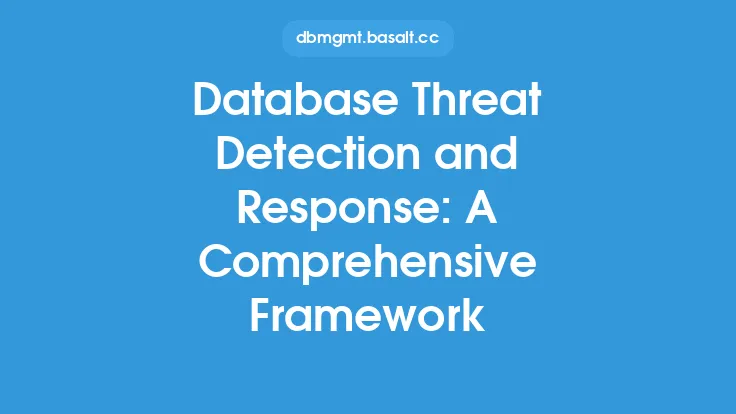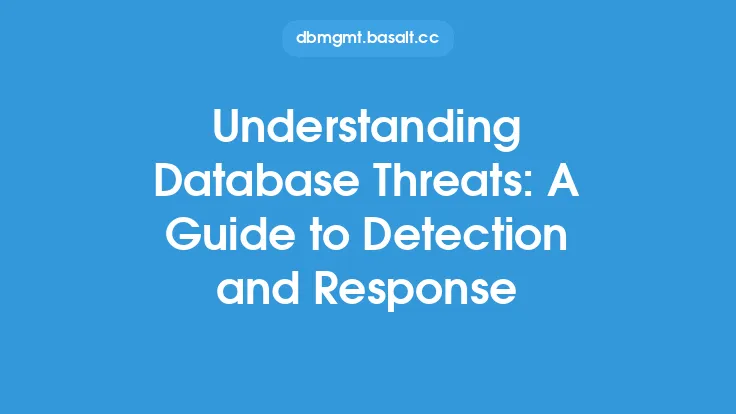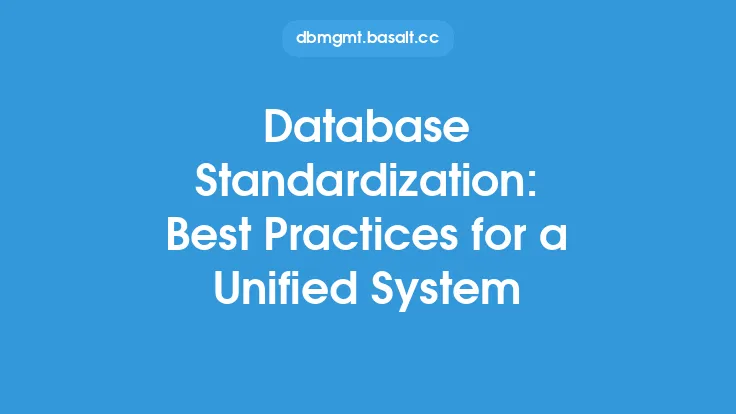Implementing a threat detection and response system is a critical component of database security, as it enables organizations to identify and respond to potential security threats in a timely and effective manner. A well-designed system can help prevent data breaches, reduce the risk of cyber attacks, and ensure the integrity of sensitive data. In this article, we will discuss the best practices for implementing a threat detection and response system, including the key components, technologies, and strategies involved.
Key Components of a Threat Detection and Response System
A threat detection and response system typically consists of several key components, including threat detection tools, incident response plans, and security information and event management (SIEM) systems. Threat detection tools are used to identify potential security threats, such as intrusion detection systems, anomaly detection systems, and vulnerability scanners. Incident response plans outline the procedures to be followed in the event of a security incident, including notification, containment, and remediation. SIEM systems are used to collect, analyze, and store security-related data from various sources, providing a centralized view of an organization's security posture.
Threat Detection Tools and Technologies
Threat detection tools and technologies are a critical component of a threat detection and response system. These tools use various techniques, such as signature-based detection, anomaly-based detection, and behavioral analysis, to identify potential security threats. Some common threat detection tools and technologies include intrusion detection systems (IDS), intrusion prevention systems (IPS), security information and event management (SIEM) systems, and vulnerability scanners. IDS and IPS systems monitor network traffic for signs of unauthorized access or malicious activity, while SIEM systems collect and analyze security-related data from various sources. Vulnerability scanners identify potential vulnerabilities in an organization's systems and applications, allowing for remediation before a breach occurs.
Incident Response Planning
Incident response planning is a critical component of a threat detection and response system. An incident response plan outlines the procedures to be followed in the event of a security incident, including notification, containment, and remediation. The plan should include procedures for identifying and classifying incidents, notifying stakeholders, containing and eradicating threats, and restoring systems and data. It should also include procedures for post-incident activities, such as conducting a root cause analysis and implementing measures to prevent similar incidents in the future. A well-designed incident response plan can help minimize the impact of a security incident and ensure a rapid recovery.
Security Information and Event Management (SIEM) Systems
SIEM systems are a critical component of a threat detection and response system, providing a centralized view of an organization's security posture. These systems collect, analyze, and store security-related data from various sources, including network devices, servers, and applications. SIEM systems can help identify potential security threats, detect anomalies, and provide real-time alerts and notifications. They can also help with incident response, providing detailed information about security incidents and facilitating forensic analysis.
Best Practices for Implementing a Threat Detection and Response System
Implementing a threat detection and response system requires careful planning, design, and implementation. Some best practices for implementing such a system include defining clear security policies and procedures, implementing a layered security approach, and providing ongoing training and awareness programs for security personnel. It is also important to continuously monitor and evaluate the system, identifying areas for improvement and implementing changes as needed. Additionally, organizations should ensure that their threat detection and response system is aligned with their overall security strategy and goals, and that it is integrated with other security systems and tools.
Integration with Other Security Systems and Tools
A threat detection and response system should be integrated with other security systems and tools, including firewalls, intrusion detection systems, and vulnerability scanners. This integration can help provide a comprehensive view of an organization's security posture, facilitating the identification and response to potential security threats. It can also help automate security processes, reducing the risk of human error and improving response times. Additionally, integration with other security systems and tools can help provide a unified view of security-related data, facilitating forensic analysis and incident response.
Continuous Monitoring and Evaluation
Continuous monitoring and evaluation are critical components of a threat detection and response system. This involves continuously monitoring the system for potential security threats, evaluating its effectiveness, and identifying areas for improvement. It also involves staying up-to-date with emerging threats and vulnerabilities, and implementing changes to the system as needed. Continuous monitoring and evaluation can help ensure that the system remains effective and efficient, and that it continues to meet the organization's security needs.
Conclusion
Implementing a threat detection and response system is a critical component of database security, enabling organizations to identify and respond to potential security threats in a timely and effective manner. By following best practices, such as defining clear security policies and procedures, implementing a layered security approach, and providing ongoing training and awareness programs, organizations can help ensure the effectiveness and efficiency of their threat detection and response system. Additionally, integrating the system with other security systems and tools, and continuously monitoring and evaluating its effectiveness, can help provide a comprehensive view of an organization's security posture and facilitate the identification and response to potential security threats.





